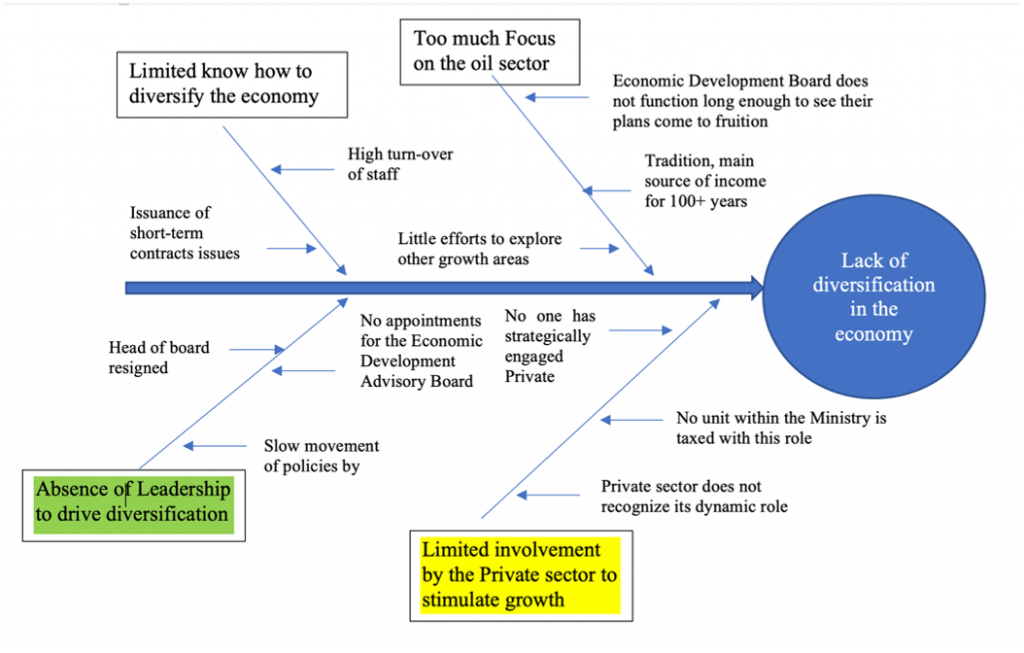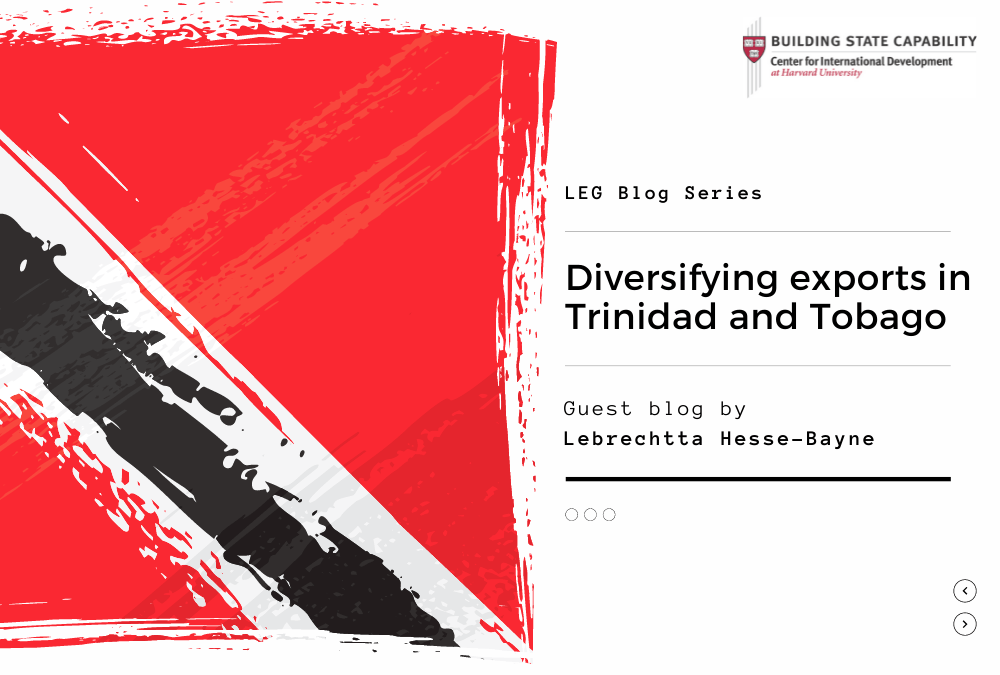Guest blog by Lebrechtta Hesse-Bayne
The leading economic growth 2021 course exceeded my expectation. While the course overview gave an idea of what to expect, the tools provided were the icing on the cake. I am taking away from this course the key learnings or applying the Problem Driven Iterative Adaptation (PDIA) approach. This step-by-step process helps you break down your problems into their root causes. One can identify entry points, search for possible solutions, take action, reflect upon what you have learned, adapt and then act again; this was an innovative learning experience.
Practitioners most often think they know the development challenges and try to address them by coming up with solutions. However, the PDIA approach allows you to understand the root causes of stagnating economic growth and manage your growth strategy and the binding constraint. The idea of high bandwidth organization was my second take away. The dynamism of this entity includes representatives from public and private sector organizations interested in addressing growth challenges. Their modality of operation, which provides for consulting stakeholders to determine their challenges, the quick access to decision-makers to respond to the struggles firms are facing to promote economic growth and the learning which takes place when trying to find solutions, was inspiring.
The most revolutionary was the opportunity a high bandwidth organization has to address national economic growth challenges with localized solutions and not a one-size-fits-all foreign approach. Rarely do we hear of economic growth policies that want to marry the inclusiveness of social policies to ensure the equitable distribution of economic growth. This approach incorporated in the ‘Leading Economic Growth’ 2021 course was refreshing, a recommendation for all economic strategies and policies.
I commenced the course intending to tackle ‘limited opportunity to diversify the economy, resulting in significant growth. Using the fishbone diagram to deconstruct our growth challenge led to the recognition that the most immediate action required is to address the absence of leadership to drive diversification—followed by the limited involvement of the private sector to stimulate growth. The fish diagram below reflects this in yellow and green.

As the analysis of our growth challenge progressed, it became evident that spending time focusing on a laundry list will be wasting the limited resources available. In reviewing our fishbone to determine if others felt a constraint with efforts made to overcome it by several stakeholders, the shortage of foreign exchange emerged as the low supply to our binding constraint.
To this end, the immediate options to address this challenge will take the shape of the following:
- An economic growth leadership structure to coordinate exports and diversify the export basket.
- This high bandwidth organization will have to engage the private sector to expand and increase exports.
- Explore Industrial Machinery and Electrical machinery and equipment sector A shift from the oil sector examining new sectors identified by the Harvard Atlas of Economic Complexity.
- This will require, for example, revised migration policies that facilitate the movement of know-how into the country, attracting international companies to expand the needed know-how to diversify the opportunities into the ‘Industrial Machinery and Electrical machinery and equipment sector.’
The above implementation will require equitable sharing of benefits derived from growth to address the inequality gap. Intentional efforts to create inclusive and well-functioning markets, making sure that the persons in the ‘middle of the economy’ have good jobs while at the same time measuring governance to gauge efficiency and responsiveness should be the norm.
Working along with Governments, I hope to add value to their work by helping national teams find local solutions to their economic growth challenges.
My open question that the next course could answer is how and who monitors high bandwidth organizations established locally for effectiveness?
This is a blog series written by the alumni of the Leading Economic Growth Executive Education Program at the Harvard Kennedy School. 65 Participants successfully completed this 10-week online course in May 2021. These are their learning journey stories.
To learn more about Leading Economic Growth (LEG) watch the faculty video, and visit the course website.
